It might seem an impossibility to see all eight myriad of Japan’s kami in one single place. But every year there is an opportunity to do just that, in one of Japan’s most attractive regions. It takes place in Shimane prefecture, by the side of the Japan Sea.
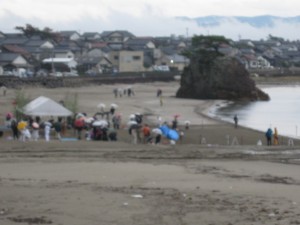
The beach before dusk
Twenty minutes walk from Izumo shrine is a pleasant stretch of sandy beach. It’s here in the autumn that kami from the whole of Japan are welcomed. As in olden days, they prefer to travel by sea: land routes were few and far between in a country of unpassable mountains.
A tent is set up facing the sea, with a simple altar on which sits Ryuja-san – the snake familiar who acts as guide to the kami. Snakes and dragons are often conflated in the Japanese imagination, and in this case the dragon-snake may be a reference to the sea serpents that are blown here from southern parts in the stormy monsoon season.
Four ritual fires signal the place for the kami to land, and there are two himorogi tree branches into which the kami will descend. In the gathering darkness the throng of people is intense, and by the time of the ceremony there must be all of five thousand people crammed around the tent and along the narrow processional path. The ritual itself takes thirty minutes or so. In the open darkness the chant of norito is barely audible above the lapping waves, but there’s an unmistakable wailing sound to announce the arrival of the kami.
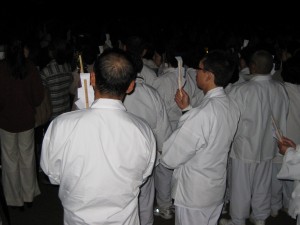
Some of the onlookers, holding gohei for the kami
All of a sudden priests are pushing through the crowd and asking spectators to step aside and observe silence. Some people annoyingly continue to chat or talk on mobile phones. Does it disturb the kami? It’s hard to say for they are secreted through the crowd on the himorogi behind white sheets.
The yaoyorozu (eight myriad) kami have arrived at Izumo, initiating a month-long celebration that starts with a kagura dance for them at Izumo Taisha. Those in the know leave early to secure their place in the shrine’s dance hall. Meanwhile, on the beach, others linger behind to pick over the remains of the ritual. Some scoop the ash of the fires into containers as a sacred item.
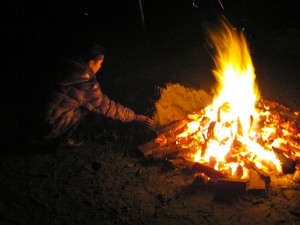
Collecting ash from the fires
Once at Izumo Taisha the kami are entertained by the kagura dance, then borne away to rest for the night after their long journey. They stay in a kind of dormitory along the sides of the worship hall, known as jukyusha. In front of them lies a busy month of conferences and shrine visiting. They will remain at Izumo Taisha for a week, then circulate around eight other shrines in all.
As well as attending ceremonies at the places they visit, they have much to discuss – the granting of love ties, the grain yields and saké production for the coming year, plus other weighty matters. On the 26th day after their arrival there is a farewell ceremony at Mankusen Shrine, and a final leave-taking at Izumo Taisha before they disperse back to their respective homes.
In the pre-Meiji calendar, this time of year was known as kanna-zuki (month without kami). In Izumo, though, it was known as kamiari-zuki (month with kami). It’s a reminder of the power that the Izumo region enjoyed before the fifth century, and how it was given spiritual dominion of the country in a treaty with the Yamato hegemon. Even now it remains in an odd kind of way an alternative power centre to the primacy of Ise. In the days to come, while the kami circulate Izumo, I intend to explore this fascinating area in further entries.
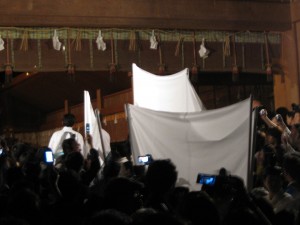
Kami leaving the kaguraden
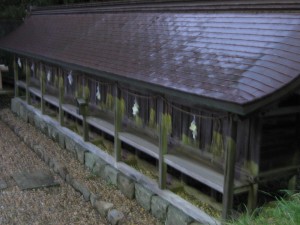
The 'jukyusha' where the kami spend the night
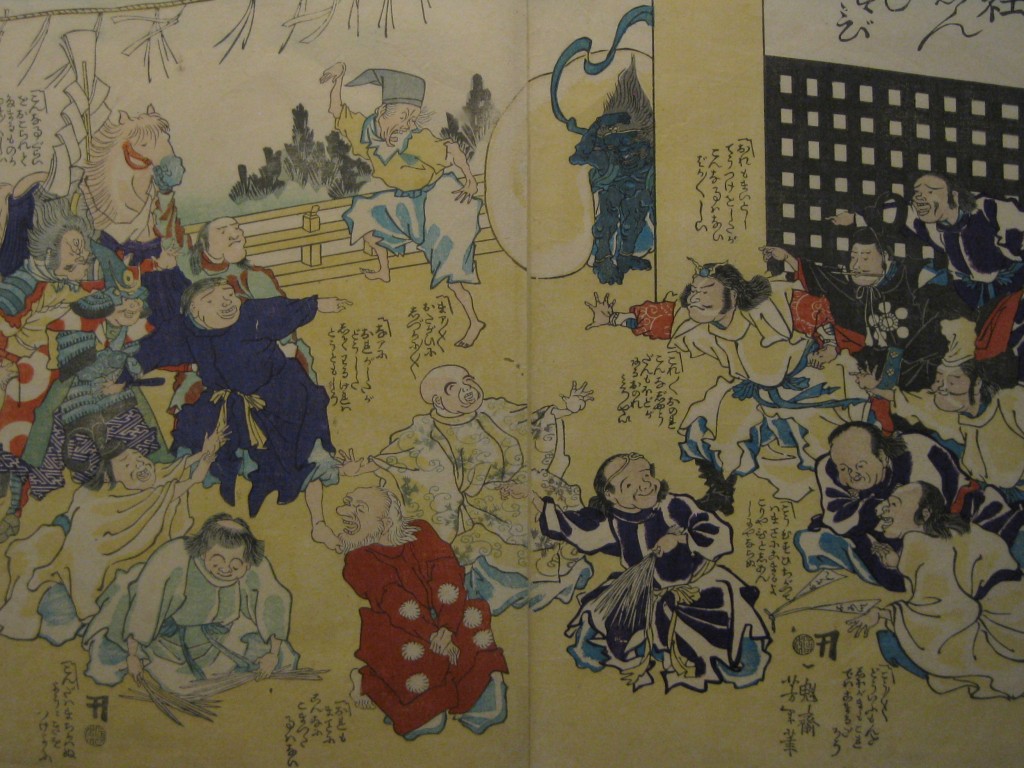
Edo-era depiction of the kami in conference

Leave a Reply